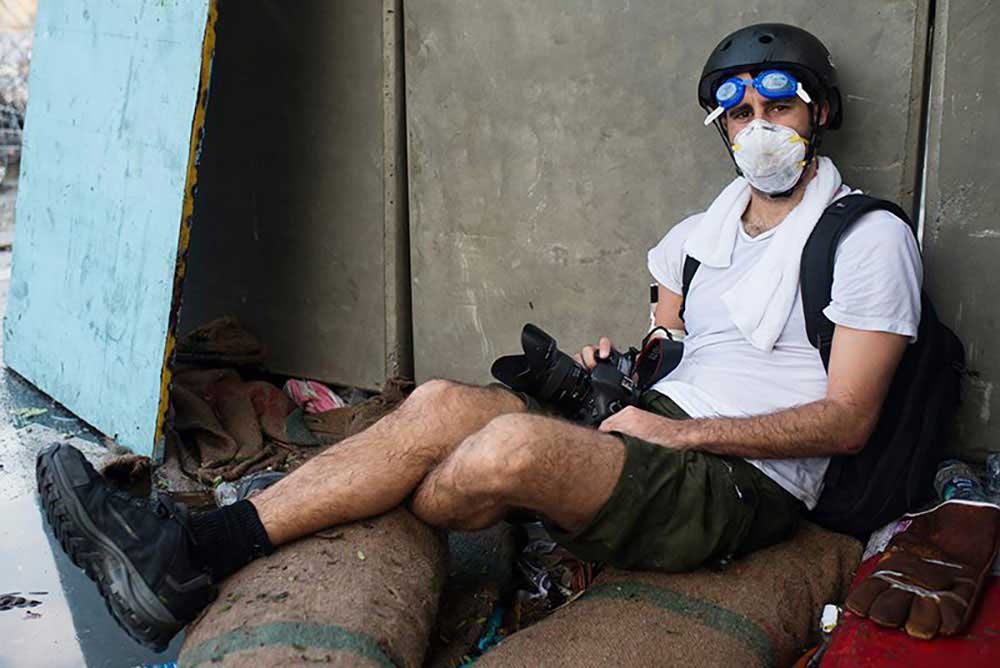Biel Calderon is a multimedia producer with 9+ years of experience in the field of audiovisual communication and journalism.
Former regional video producer for Greenpeace Southeast Asia, he’s currently working as an independent filmmaker, photographer and multimedia journalist based in Bangkok and available for short and long form projects.[Official Website]
Can you tell us a little about yourself?
I was born in Mallorca, Spain, in 1983. I wanted to study Geography because I loved the idea of traveling the world and meeting different cultures. I used to know the flags of the 195 countries recognized by the UN. Then, I realized what I really wanted to do is to tell stories while traveling the world. So, Journalism took the place of Geography. I ended up studying Political Science in Madrid. Later, Photojournalism and Asian Studies in Barcelona, and (MA) International Multimedia Journalism in Beijing.
Since 2010 I live in Asia: first in the Philippines, then in China, and lastly, in Thailand, where I currently work as an independent photographer, filmmaker and multimedia journalist based in Bangkok.
How did you get interested in photography?
My interest in journalism came before I’d get into photography. As I mentioned earlier, I like to tell stories, and for some reason, I feel more comfortable doing that visually, either with photography and, since, 2011, using video as well. However, I can definitely say that I’ve got interested in photojournalism while visiting a photo exhibition by Gervasio Sanchez, in Barcelona, around 2005, if I’m not mistaken.
What’s in your camera bag?
It would depend on the assignment, whether I need to shoot video, take photos, or both. If it’s only a photography assignment, I’ve 3 main kit configuration:
a) Event photography: Pelican Case 1510 with Canon 5D MIII, Canon 80D, Canon 24-70 f2.8 I, Canon 70-200 f/2.8 II, Canon 35mm f/2, Canon 10-22mm f3.5-4.5, flash, light reflectors, batteries, etc.
b) Action (protest, etc.) photography: Newswear Documentary Chestvest or LowePro CompuDay Photo 250 with Canon 5D MIII, Canon 80D, Canon 24-70 f2.8 I, Canon 70-200 f/2.8 II, Canon 10-22mm f3.5-4.5, iPad or laptop (to transfer photos) batteries, etc.
c) Documentary photography: Newswear Documentary Chestvest with Canon 5D MIII, Canon 80D (usually stays at the hotel), Canon 35mm f/2, Canon 85mm f/1.8, portable light reflectors, notebook, water, etc.
What’s the most surprising thing you carry?
I used to carry a Thai phrasebook. But I lost it somewhere. I’d say… an extra t-shirt? Thailand can be incredibly hot and humid.
What is the one thing you couldn’t live without?
My phone, the best camera you can have, and water.
What are some of the details that you find essential for your style of bags?
It has to be comfortable enough to carry it with you during the whole day, rugged enough to be in the back of a van on a bumpy road, and discreet enough to go unnoticed, (which it’s almost impossible most of the time).
What are the important things for protecting your camera gear?
Good padding and common sense.
Can you give me the essential carry kit when traveling the globe (bags, accessories etc.)?
If I’m going to have a car, I would carry my Pelican Case 1510 ane my Newswear Documentary Chestvest. I would leave the pelican case either in the hotel or in the car, and then carry the camera in my shoulder and the rest of the equipment that I need for the day (water, notebook, recorder, pencil, small towel, extra t-shirt, power bank, tissues, batteries, extra cards, etc.) in the vest. If there’s no car/driver involved, my Think Tank AIRPORT COMMUTER and my Newswear Documentary Chestvest would travel with me then.







